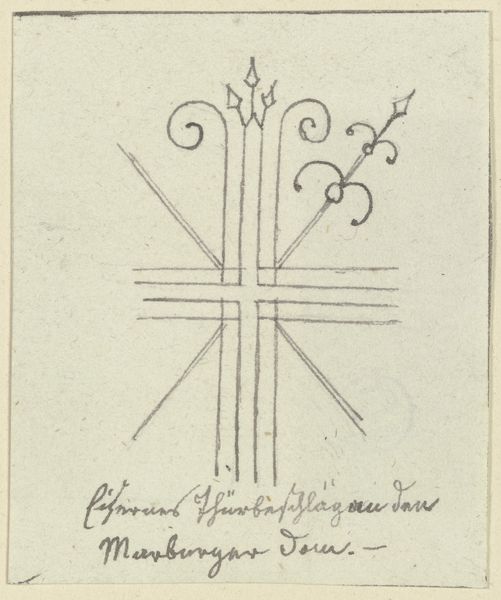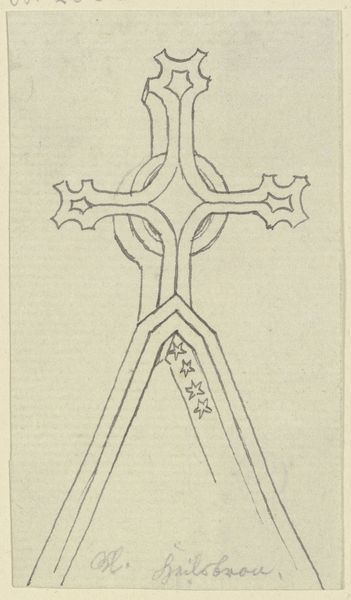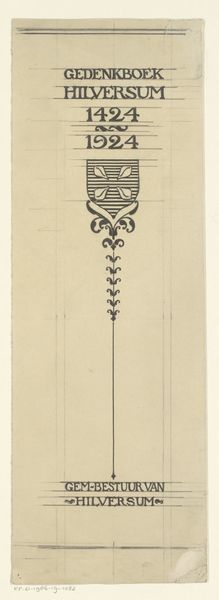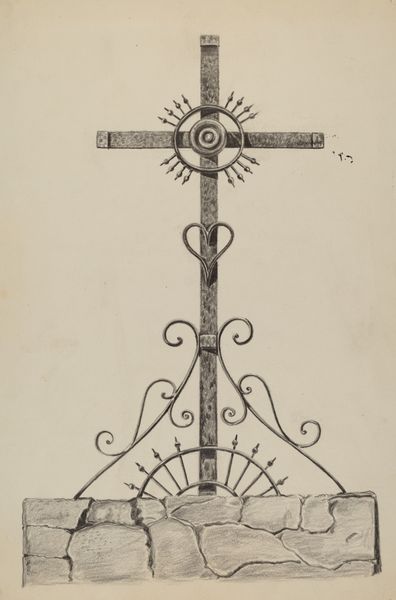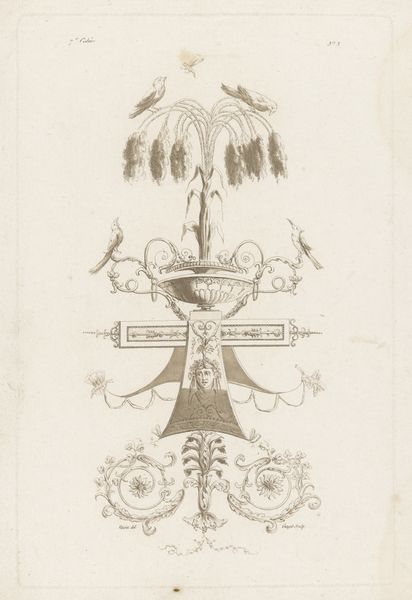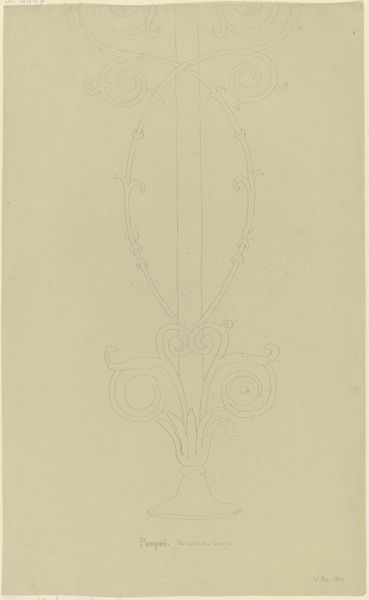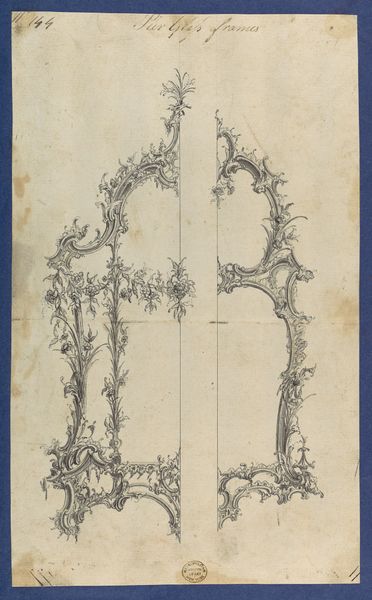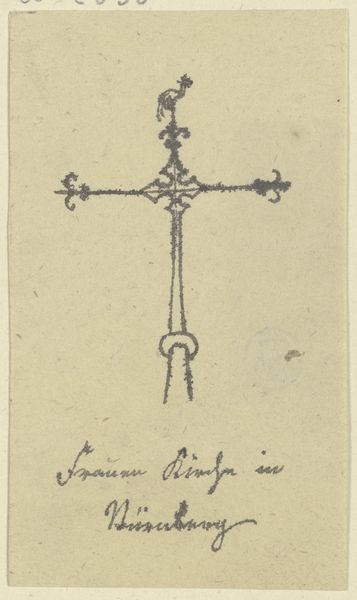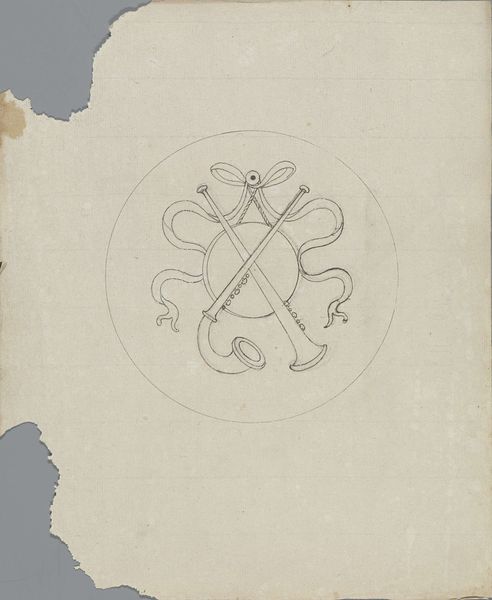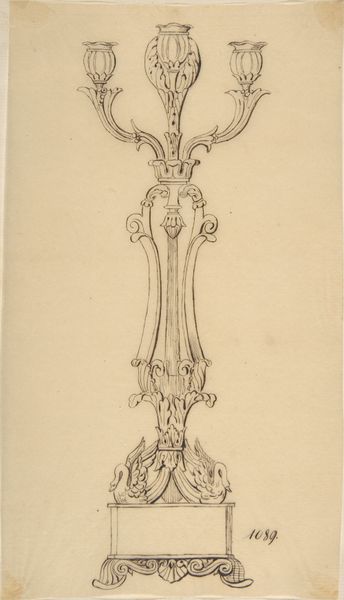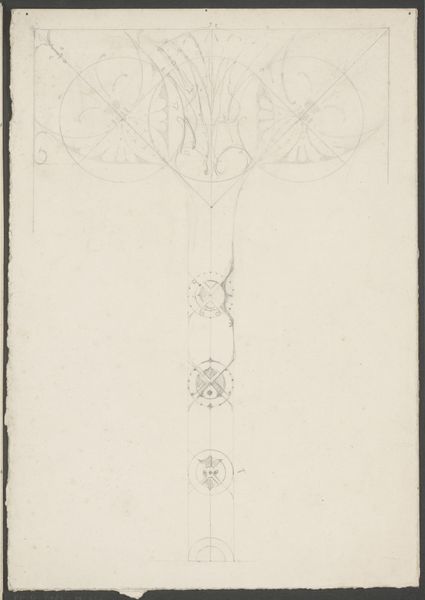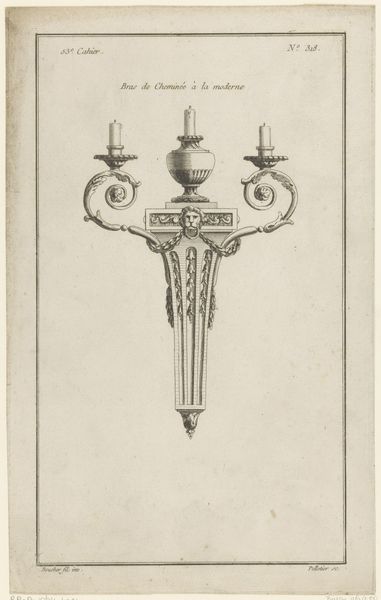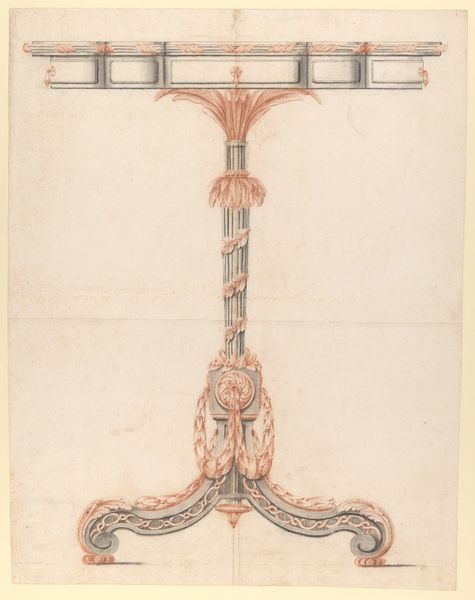
drawing, ornament, ink
#
drawing
#
ornament
#
16_19th-century
#
ink
#
geometric
#
line
#
decorative-art
Copyright: Public Domain
Curator: Welcome. Today, we're observing a piece titled "Florales Ornament in Schleißheim," attributed to Karl Ballenberger. It's a 19th-century ink drawing. What springs to mind for you upon seeing it? Editor: Well, initially, there’s something almost skeletal about it, stark and linear. The muted color lends it the aura of a faded memory, or an architectural sketch unearthed from dusty archives. A delicate spirit hovers there. Curator: Precisely. It is fundamentally an architectural concept rendered through Ballenberger’s particular lens. Consider the intertwining geometric shapes – note how floral flourishes delicately mediate rigid linear frameworks. It reads as if Ballenberger aims to harmonize organic nature with human-made structure. Editor: Yes, and isn't that cross section really suggestive? It’s a kind of symbolic marriage, I think. Almost like nature coiling around the cold, hard structures, breathing some kind of life force into it. Curator: Symbolically rich indeed. You get a glimpse of an embrace between polar opposites, perhaps reflecting a broader 19th-century sensibility, yearning to reconcile Romantic notions of nature with increasingly industrial society. One can sense, too, an intimation of fin-de-siècle aesthetics brewing on the horizon, given his affinity for decorative form. Editor: There’s such simplicity in the artist’s hand, really; but I see it also as kind of bold because he just left that kind of sketchy line to define that. I think he expressed there the natural movement to imagine the whole form! Curator: That line work! It really showcases a mastery over simple mediums to convey layered meaning. These weren't mere doodles but rather thoughtful meditations on artifice, representation, and design’s evolving role. So what lingers with you most then? Editor: How art can emerge from structure itself. It is also suggestive of the beauty one finds after some loss or disappearance of one artistic or architectonical achievement from that time. I would feel I am looking into some sort of memorial in an elegant artistic way. Curator: For me, it’s that delicate interplay Ballenberger captured—those quiet yet potent conversations across form and essence in his rendering of ornamentation. Thanks so much for sharing insights.
Comments
No comments
Be the first to comment and join the conversation on the ultimate creative platform.
